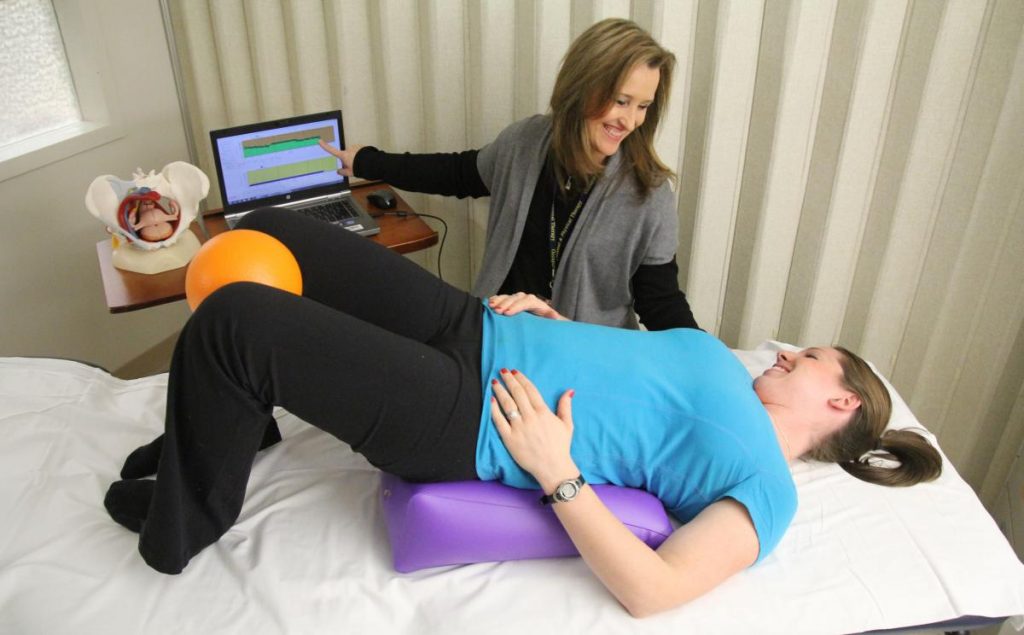Pelvic Floor Physiotherapy

Pelvic floor physiotherapy involves various methods for improving the condition of the vagina. It usually involves exercises, manual techniques, electrical Stimulation, and movement coordination. You may combine some of these methods. To learn more, read the following paragraphs. You can also choose to undergo biofeedback exercises at home. A biofeedback unit uses electrical impulses to monitor muscle tension and relaxation. The therapist will explain the desired readout and how to train your muscles to obtain it.
Exercises
A physiotherapist will teach you specific exercises for your pelvic floor muscles. These exercises are designed to stretch and strengthen weak and tight muscles, improving flexibility and range of motion. Pelvic floor physiotherapists may also use a biofeedback technique in which a physiotherapist inserts a probe into the man’s vagina or woman’s rectum. The results are displayed on a computer screen.
You can feel the pelvic floor muscles tighten when seated or urinating. During pelvic floor physiotherapy, you should relax your thighs, buttocks, chest, and stomach muscles to reduce the tightness. These exercises have been shown to help improve urinary continence. Many physical therapists specialize in pelvic floor physiotherapy. In addition, many people benefit from formal physical therapy. Just like how a lot of people benefit from pelvic floor physiotherapy Burlington ON.
Pelvic floor exercises are performed while sitting or lying down. The next step in pelvic floor physiotherapy involves pulling your navel close to your spine while exhaling. Hold for one second, then release. Repeat this process ten times. Repeat a session of pelvic floor exercises as many times as you need to. Often, these exercises can reduce leaks within four weeks. You can also try single contractions whenever you suspect that you are likely to leak. Some people try increasing the frequency and repetitions. Follow the instructions carefully, as over-exertion can lead to muscle fatigue and increase urine leakage.
Manual techniques
The physiotherapist evaluates the pelvic floor with a variety of manual techniques. These include soft-tissue mobilization, trigger point manipulation, connective tissue manipulation, and deep tissue massage. Electrical Stimulation is another method that directs contractions of pelvic floor muscles. It is used in the treatment of urinary and bowel incontinence. Biofeedback Therapy may also be used to delay prolapse.
In pelvic floor physiotherapy, a physical therapist works on the pelvis’s external and internal soft tissues. This soft tissue, also known as the fascia and muscles, can hold tension from bad body mechanics, bowel disorders, or stress. Manual therapy aims to restore full range of motion, improve muscle coordination, and realign pelvic organs. This type of therapy effectively treats patients suffering from pelvic floor disorders.
When applying manual pelvic floor physiotherapy, the therapist must be aware of the funnel-like configuration of the musculature. The therapist must use a slow, controlled process to stretch muscle fibers. During the procedure, the therapist should hold the stretch for 20 seconds. During pelvic floor physiotherapy, the therapist should also consider the position of the patient’s vagina or the location of the genitals and apply pressure there.
Electrical Stimulation
Pelvic floor physiotherapy uses electrical Stimulation to strengthen weak pelvic floor muscles. While electrical Stimulation has its uses, it is not recommended for everyone. A low-voltage electrical current is passed through the pelvic floor muscles during a session without any patient input. Alternatively, patients can perform biofeedback exercises before electrical stimulation sessions. While electrical stimulation doesn’t directly help strengthen pelvic floor muscles, it helps women understand how to feel and engage their pelvic floor muscles.
One study used EMG and digital palpation to determine the effectiveness of electrical Stimulation for women with PFM weakness. The patients were evaluated in lithotomy position following micturition and the abducted leg position. Participants were instructed to relax their pelvic floor muscles before and after the sessions. Lastly, participants filled out questionnaires to measure muscle strength and patient satisfaction. Overall, electrical stimulation effects for pelvic floor physiotherapy were remarkably effective.
Movement coordination
Pelvic floor physiotherapy involves movement coordination exercises and manual techniques to stretch and strengthen weak muscles and improve flexibility. A nurse guides the patient during pelvic floor exercises, identifying sensations and isolating pelvic muscles from other muscle groups. Through repeated exposure, the patient is taught to maintain relaxation. Movement coordination exercises improve muscle memory and relieve maladaptive patterns. For most patients, the treatment involves a weekly visit to a physiotherapist.
During an initial visit, the physical therapist will assess pelvic muscles and perform an examination. This examination will reveal any weak muscles or abnormal movement patterns. It will also show any joint malformations. Movement therapists may also use real-time ultrasound to assess pelvic floor muscle contractions and abdominal wall muscles. During this test, the patient may feel some pain during the examination. In addition, it can be helpful to see how forces in the pelvic region function concerning breathing patterns.
